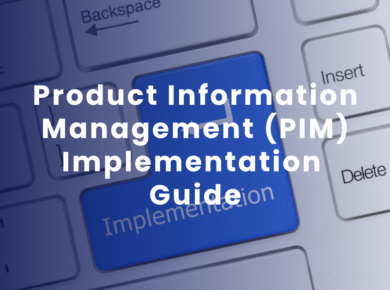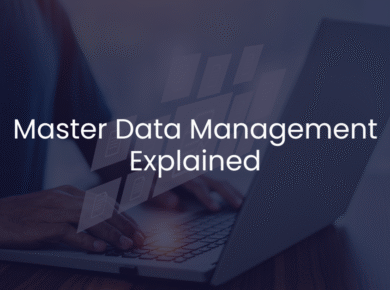Enterprise Data Management in Transition: 2026 Trends and AI-Driven Shifts Read Blog
Every organization today runs on content, including images, videos, documents, audio files, and even 3D models. To manage this growing library, many have turned to Digital Asset Management (DAM) platforms.
But here’s the truth: a DAM system alone isn’t enough. If the assets are not properly tagged or described, the platform becomes just a digital warehouse. This gap between storing assets and managing them correctly is called the metadata gap, and it carries hidden costs that most businesses do not fully recognize.
The metadata gap occurs when digital assets are stored in a DAM but lack the necessary information to make them easy to find, use, and share safely.
This issue may seem minor at first, but it quickly adds up:
- Teams spend hours searching for the correct version of a file.
- Important content gets recreated because no one can locate the original.
- Campaigns or projects can slow down when approved assets are not available on time.
- Rights and license restrictions can be overlooked, causing compliance problems.
According to McKinsey, employees waste nearly 20% of their workweek searching for information. When metadata is missing, that lost time affects entire teams.
Why the Metadata Gap Matters?
Bad metadata isn’t just a hassle. It reduces efficiency, compliance, and the value of the assets themselves:- Operational Inefficiency – Forrester estimates that companies lose $2.5 to $3.5 million each year because of poor data practices. A significant part of that comes from wasted time searching for or recreating assets.
- Underused Assets – Gartner reports that 70% of digital assets are never used more than once. This often happens because they aren’t tagged well enough to be found again.
- Compliance Risks – PwC found that 23% of organizations faced brand safety or compliance issues related to unmanaged assets. If rights and license data aren’t tracked properly, it can quickly lead to legal problems.
- Technology Underperformance – IDC estimates that up to 40% of DAM features are underused when metadata is poor. AI search, automation, and personalization simply don’t work without clean data.
How DAM Platforms Help Close the Gap?
Modern digital asset management (DAM) platforms aim to prevent these issues and turn metadata into a business benefit. They achieve this by:- Setting clear metadata standards across the organization.
- Using AI-driven auto-tagging to quickly and consistently capture details.
- Embedding rights and license information directly into asset records.
- Capturing metadata as assets are created, rather than afterward.
- Providing advanced search tools, including faceted, semantic, and AI-powered options, to find content instantly.
- Acting as a single source of truth, reducing duplication, ensuring brand consistency, and improving governance.
Why Pimcore DAM Is a Strong Choice?
Among modern platforms, Pimcore DAM stands out for its flexibility and depth. It goes beyond storing assets and actively manages metadata at scale:
- Centralized Metadata Management – keeps metadata consistent across departments.
- AI-Powered Tagging – speeds up enrichment while maintaining high accuracy.
- Rights & License Tracking – helps organizations avoid compliance issues.
- Workflow Automation – uses metadata to streamline approvals, version control, and distribution.
- Seamless Integration – connects DAM metadata with PIM, MDM, CMS, and ERP systems.
- Advanced Search & Discovery – makes it easy to find, reuse, and monetize digital assets.
By serving as a single source of truth, Pimcore DAM helps businesses reduce duplication, speed up content workflows, and maintain brand trust.
Key Takeaways
The metadata gap is one of the most ignored issues in digital asset management. It wastes time, lowers the value of content, and raises compliance risk. The solution is not only to store assets; it’s to make them usable, searchable, and governed with strong metadata. Modern DAM platforms, particularly Pimcore DAM, are built to achieve this.
Discover how DAM strategies can help close the metadata gap and unlock the full potential of your digital assets.
Latest Resources
Unlocking Growth: Why PIM DAM Integration Is a Strategic Imperative Read Blog
Mastering Product Data Syndication: A Business-Centric Approach Read Blog Why Accurate Product
The Hidden Costs of Missing Metadata in Digital Asset Management Read Blog
Key Takeaways: Identify the Right Time for PIM: Gain clarity on identifying
PIM vs MDM: What’s the Difference and When to Use Each? Read
Questions to Ask When Choosing a PIM Vendor? - Part 2 Read
Questions to Ask When Choosing a PIM Vendor? - Part 1 Read
Choosing the Right Master Data Management Implementation Style for Your Business Read
Key Takeaways Ensure a Single Source of Truth: Get a clear understanding









